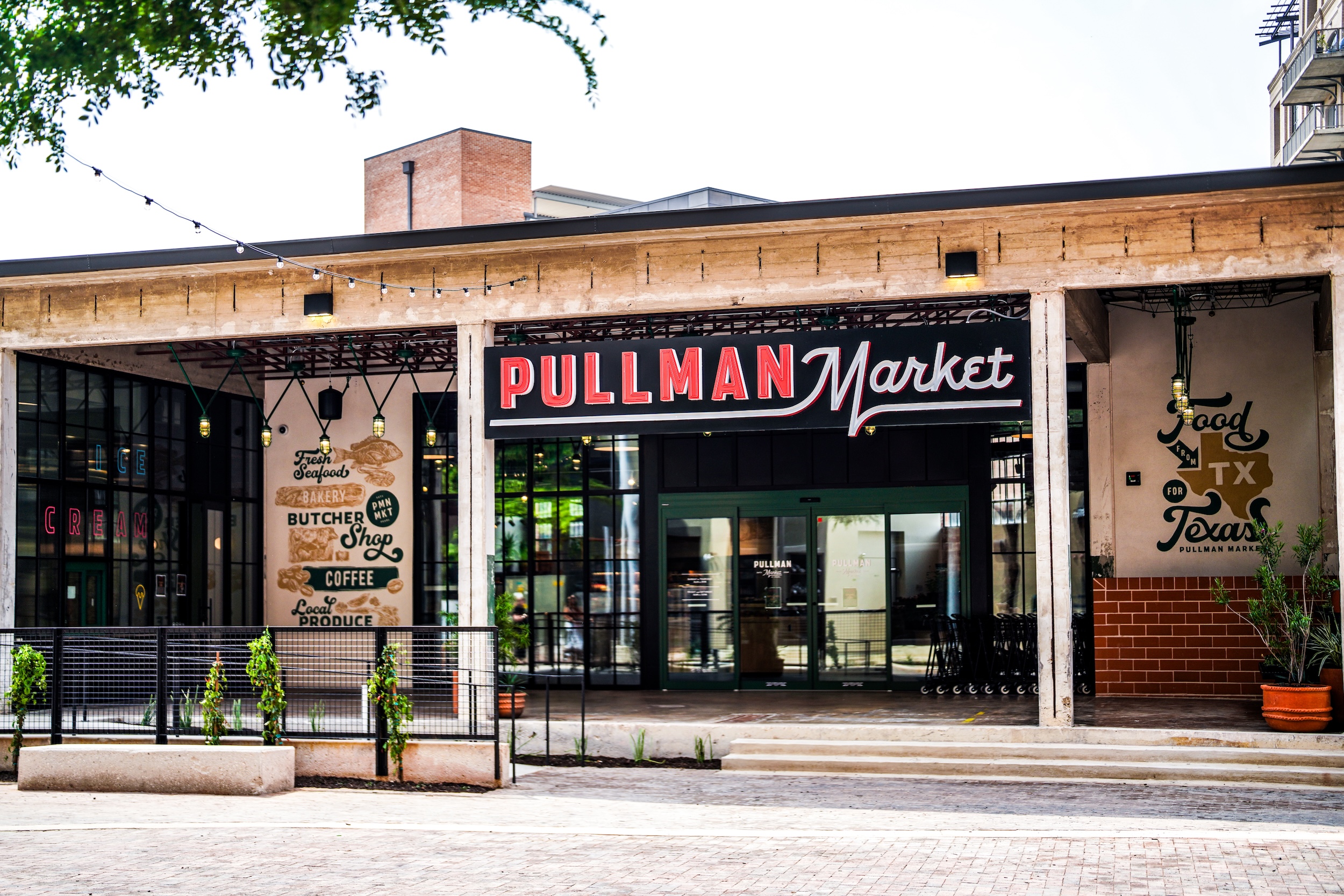NORTH STARS:
Production & Consumption
Waste Management
Community Support
“The 40,000-square-foot Pullman Market is a dream realized by chefs who wanted a market that could serve the neighborhood while also supporting local producers.”
The Pearl District in San Antonio has a storied history. The now-bustling part of the city takes its name from a brewing company founded in 1883 that eventually became known as the Pearl Brewing Company. Pabst bought the 23-acre complex in 1985 and closed it 16 years later, leaving its future wide open. For a short while, that future was uncertain, but the Pearl — as locals call it — has grown into a desirable mixed-use district that houses businesses, restaurants, retailers, spas, and a weekly farmers market.
Earlier this year, Pearl District’s first food market opened, offering a place for locals to shop for groceries, prepared foods or dine out. The 40,000-square-foot Pullman Market is a dream realized by chefs who wanted a space that could serve the neighborhood while also supporting local producers.
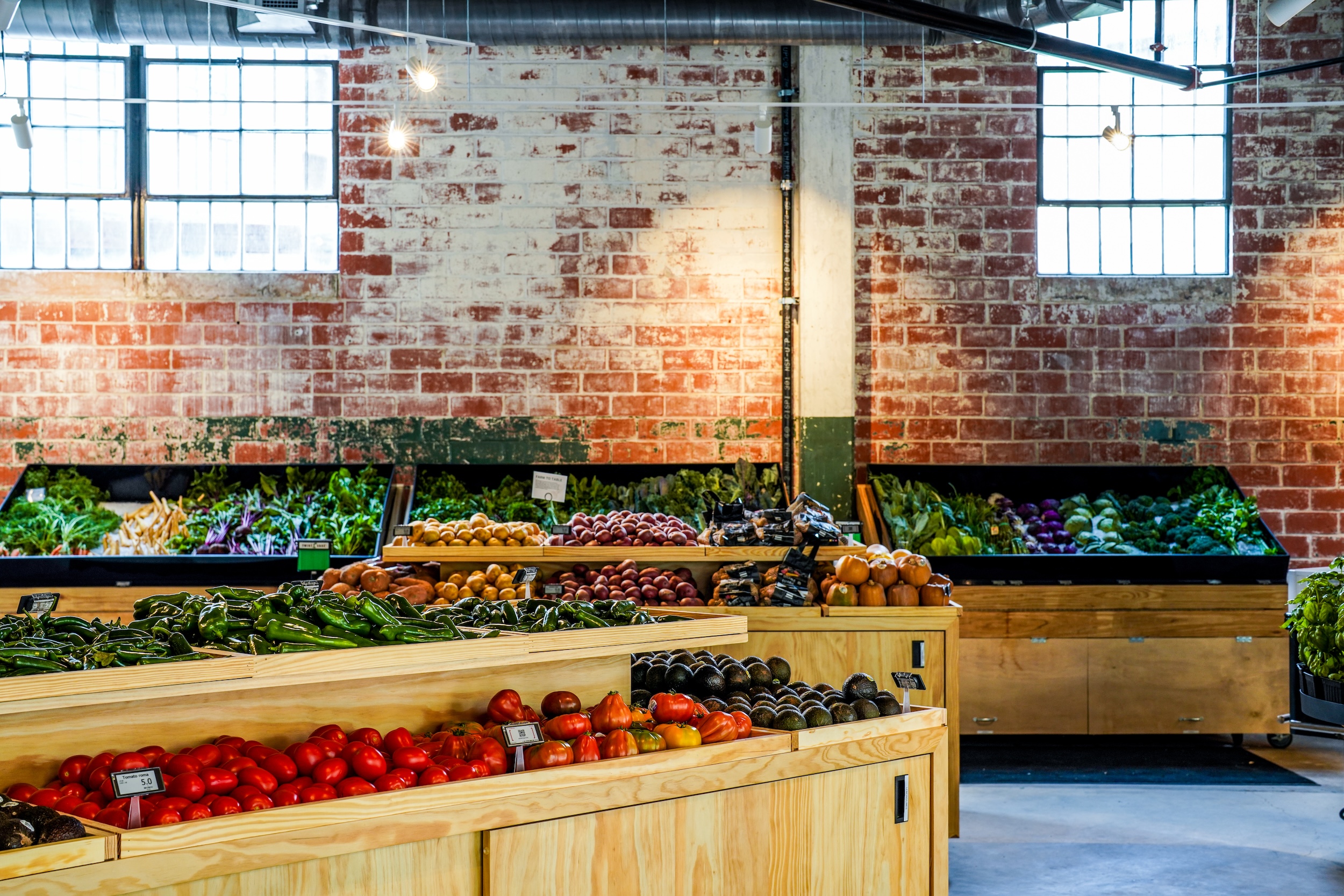
Unsold produce from the grocery goes to the market’s food ventures to prevent food waste. Image courtesy of Pullman Market.
Executed by the Emmer & Rye Hospitality Group, Pullman Market is a one-stop shopping and dining establishment that could only be conceived by those who intimately understand every step of the food system, from how food is grown or raised to how it’s consumed. The market has six departments: grocery, bakery, produce, butcher and fishmonger, wine and beer, and retail. The venue also has a commercial kitchen.
Interspersed throughout those departments are five quick-eats restaurants selling burgers, sandwiches, ceviche, ice cream, and coffee, with five full-service restaurants surrounding the market. None of these concepts act independently. Customers can buy a bottle of wine, including Texas wines from local wineries such as Duchman Family Winery or Spicewood Vineyards, to open while they’re enjoying a burger from the Burgers by the Butcher quick-eats stand or to take home.
The beef in those burgers comes from locally raised cows that are butchered in-house. The butcher grinds beef into an 80/20 mix only for a very practical reason — the market’s serious attempt to waste as little of the food that comes through its doors.
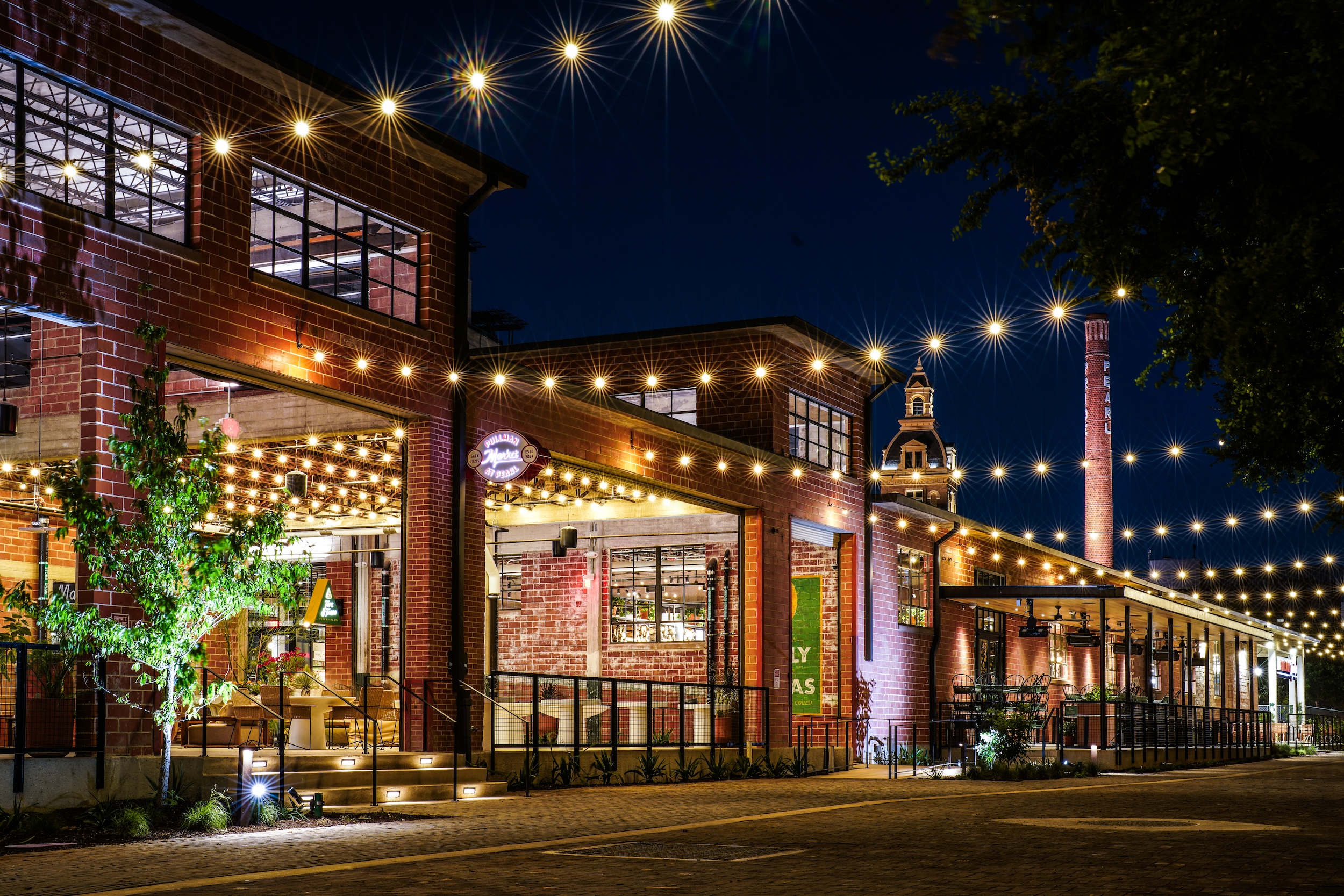
With restaurants, stores, and more, Pullman Market is truly a community hub. Image courtesy of Pullman Market.
Fighting Food Waste at Pullman Market
Fighting food waste is a top property at Pullman Market. “Sometimes when you hear ‘eat local, shop local’ — because of how commercialized that concept has become, there’s a little bit of an eye rolling moment,” says Gabriela McClain, marketing manager of Pullman. “But when you see it in this concept, it’s so effortless and it’s a natural part of what should be.”
The use of ground beef provides an example of that philosophy. When the butcher breaks down a cow, every part of it makes its way through the market. The best cuts often go to one of the restaurants, while customers can buy other cuts of beef at the butcher counter. The ground beef can be sold to customers, sent to the quick service Burgers by the Butcher stand, or turned into butcher’s meatballs sold by the pasta section.
Any ground beef not sold “can always be turned into a burger” before going past its prime, according to McClain, because of its 80/20 mix, ensuring as little ground beef as possible ever goes unused.
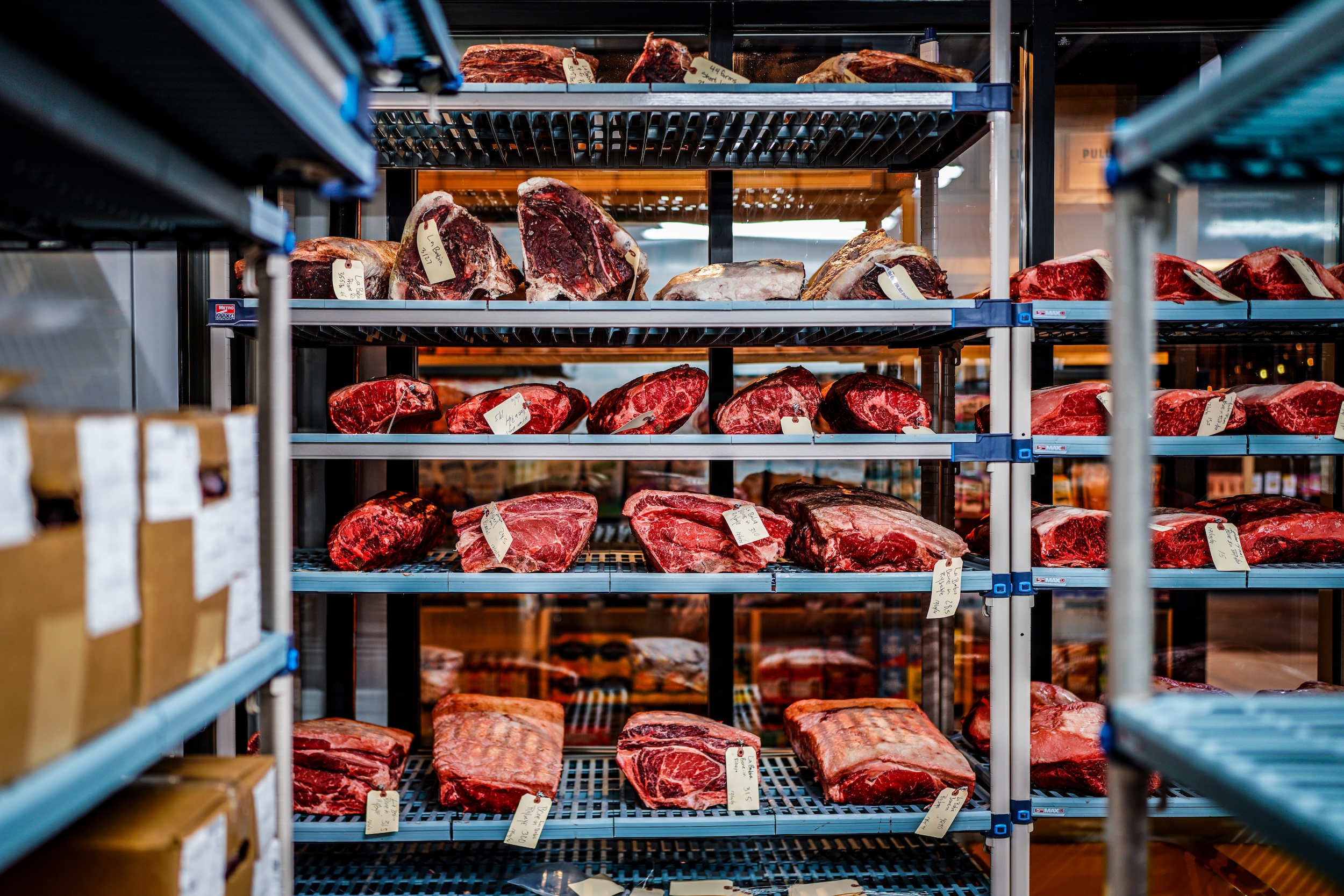
Every part of a cow is put to use at Pullman to avoid food waste. Image courtesy of Pullman Market.
The butcher hands the tallow from the cows to the tortilla maker, who uses the fat to create melt-in-your-mouth fresh tortillas used for breakfast tacos at the sandwich counter or for customers to purchase. At the ice cream counter, which sells a rotating selection of sweet scoops, customers encounter unique flavors like Chicken and Waffles Ice Cream. The ice cream contains caramelized concentrated chicken stock made at the butcher stand, and crumbled crunchy waffle pieces made with bits of dehydrated pulverized chicken skin.
Produce not purchased by customers or used in one of Pullman’s restaurants finds its way to the commercial kitchen, where tomatoes might be transformed into small-batch tomato sauce or sliced for grab-and-go salads.
Once fresh ingredients enter the market, they are used to their fullest. Any leftovers go into a pulper, transforming into compost which returns to partner farms.
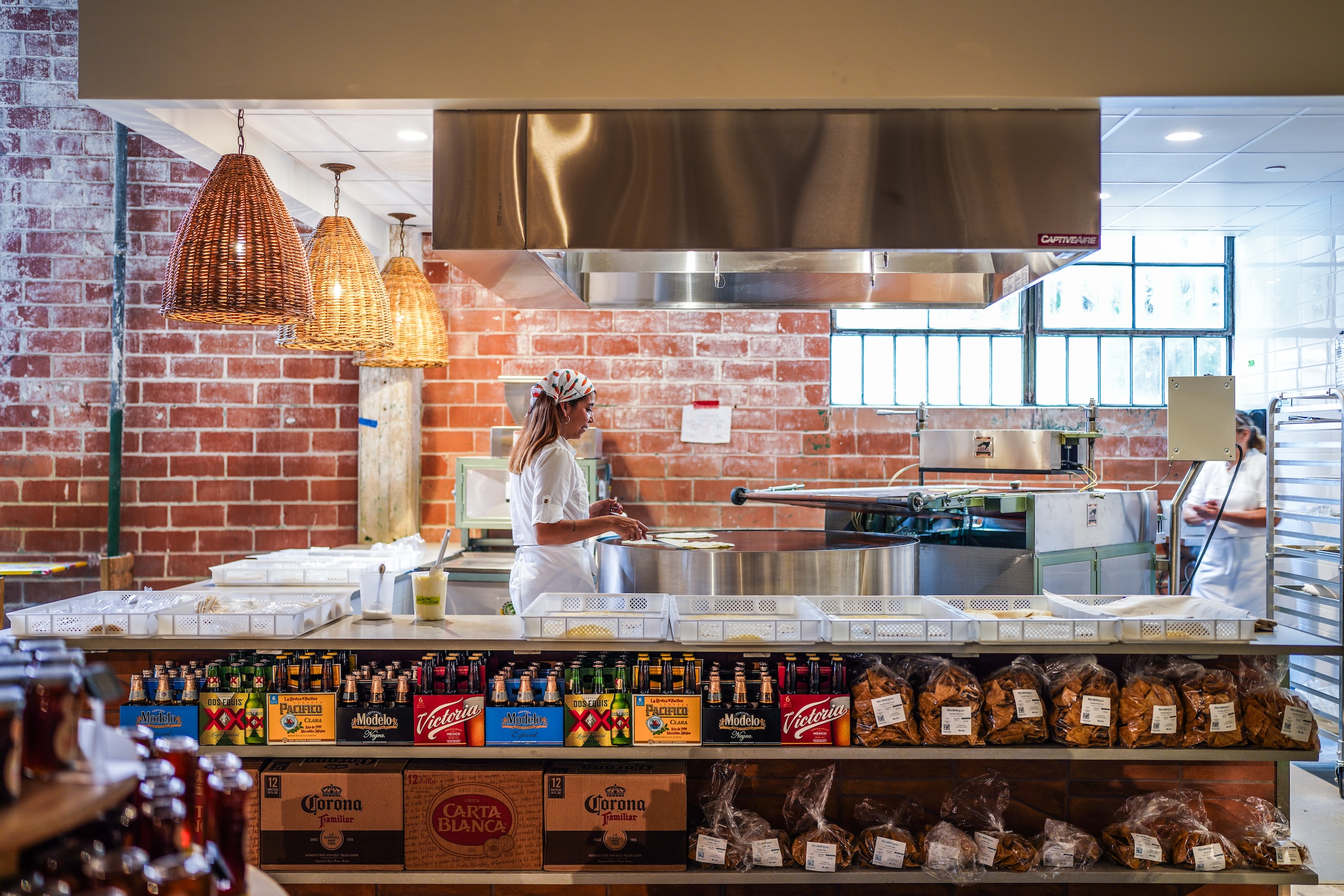
With open-concept spaces, diners get a front-row seat to Pullman’s circular food system. Image courtesy of Pullman Market.
A Commitment to the Community
The relationship that Pullman Market has built with its suppliers demonstrates its commitment to the surrounding community.
McClain highlights Yonder Way, a pig farm, as an example. The farm supplies the market with specific pig breeds, ensuring consistent structure and flavor in the meat it sells. To maintain this level of quality, the farm separates Pullman’s pigs from the rest on in its care. This prevents crossbreeding which could compromise the meat’s characteristics. However, a flood disrupted their efforts.
“The pigs swam to high ground when their survival instincts kicked in, and then did what they do when they’re all together,” says McClain. “As a rancher, you now have this scary situation where you have a lot of product, you don’t know what to do with it, and you don’t know how to sell it.”
Many butchers would not take the risk of buying those pigs without knowing the consistency and quality of the meat. However, since Pullman made a commitment to support its suppliers, some of those pigs have made their way to the San Antonio market.
“Because the group has created these wonderful partnerships, they said, ‘Hey, we’re committed to each other. This is something that’s purposeful, this is something that happens, and we’ll work with that pig,’” McClain says.
“Agility is really the name of the game when it comes to Pullman,” says McClain. That agility, along with its commitment to sourcing local and fighting food waste, makes it everything a community market should be.

Robin Shreeves is a drinks journalist and lifestyle feature writer. Her byline appears in dozens of print and online publications including Wine Enthusiast, Full Pour, Philadelphia Magazine’s Fooboz, Vintner Project, VinePair, Carpe Travel, Courier Post, Spirited, Edible Philly, Edible Jersey, and USA Today. At the highly rated Philadelphia Wine School, Robin earned her Level 3 wine and Advanced Wine Speaker certifications in conjunction with the National Wine School. Follow Robin on IG @rshreeves.


